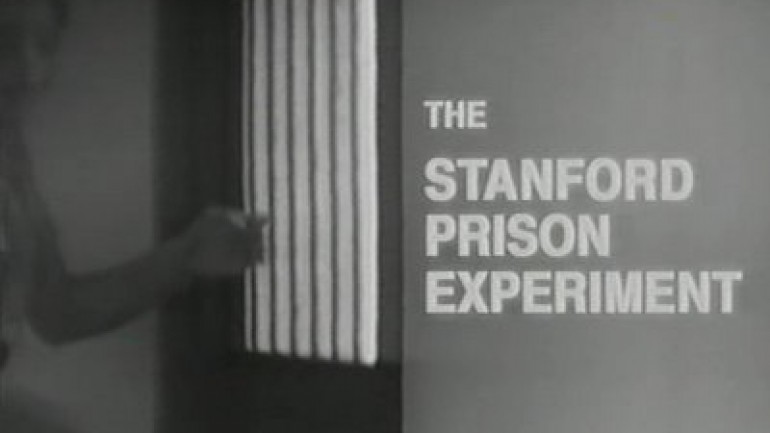The Stanford prison experiment was a study of the psychological effects of becoming a prisoner or prison guard. The experiment was conducted from August 14 to 20, 1971 by a team of researchers led by Psychology professor Philip Zimbardo at Stanford University. It was funded by a grant from the U.S. Office of Naval Research and was of interest to both the US Navy and Marine Corps in order to determine the causes of conflict between military guards and prisoners.
Twenty-four students were selected out of 75 to play the prisoners and live in a mock prison in the basement of the Stanford psychology building. Roles were assigned randomly. The participants adapted to their roles well beyond what even Zimbardo himself expected, leading the “Officers” to display authoritarian measures and ultimately to subject some of the prisoners to torture. In turn, many of the prisoners developed passive attitudes and accepted physical abuse, and, at the request of the guards, readily inflicted punishment on other prisoners who attempted to stop it. The experiment even affected Zimbardo himself, who, in his capacity as “Prison Superintendent,” lost sight of his role as psychologist and permitted the abuse to continue as though it were a real prison. Five of the prisoners were upset enough by the process to quit the experiment early, and the entire experiment was abruptly stopped after only six days. The experimental process and the results remain controversial.
The results of the experiment are said to support situational attribution of behavior rather than dispositional attribution. In other words, it seemed the situation caused the participants’ behavior, rather than anything inherent in their individual personalities. In this way, it is compatible with the results of the also-famous Milgram experiment, in which ordinary people fulfilled orders to administer what appeared to be agonizing and dangerous electric shocks to a confederate of the experimenter.





https://skeptoid.com/episodes/4102
Go to Skeptoid.com and search for this episode and you will see this experiment and it’s results are a load of bollocks. The film was also crap too.
Be careful are of your words for they become your thoughts be careful of your thoughts for they become your actions, be careful of your actions for they become your character, be careful of your character for it becomes your destiny.
I am reminded of the underlying message of Kurt Vonnegut’s “Mother Night”: “Be careful what you pretend to be, because you are what you pretend to be.”
Very interesting to see the power of identities. When we take our identities as who we are, what then are we capable of. Not just identities of prisoners or guards, but identities in any part of society.
I took from this that we should not define ourselves with the roles that society give us. They are not who we are.
I can tell you now , and im only 1 minute in, I went to a catholic boarding school , we were innocent children , we couldnt get use to the long hour punishments…… SO YOUR ANSWER IS NO!!!!!!!!!!!
“we couldnt get use to the long hour punishments”
So, you accepted the punishments and acted in accord with the institution – in this case, the formal structure of your circumstances? So, when you say “NO!!!!!!!!!!!”, I take it you mean ‘yes’ instead.
what was the question?,
“What happens if you put good people in an evil place? Does the situation outside of you meaning the institution, come to control your behavior?
or the other question was… Or do the things inside of you (moral, value, etc) allow you to become above?
I’m not sure to which part she is answering NO, héhé